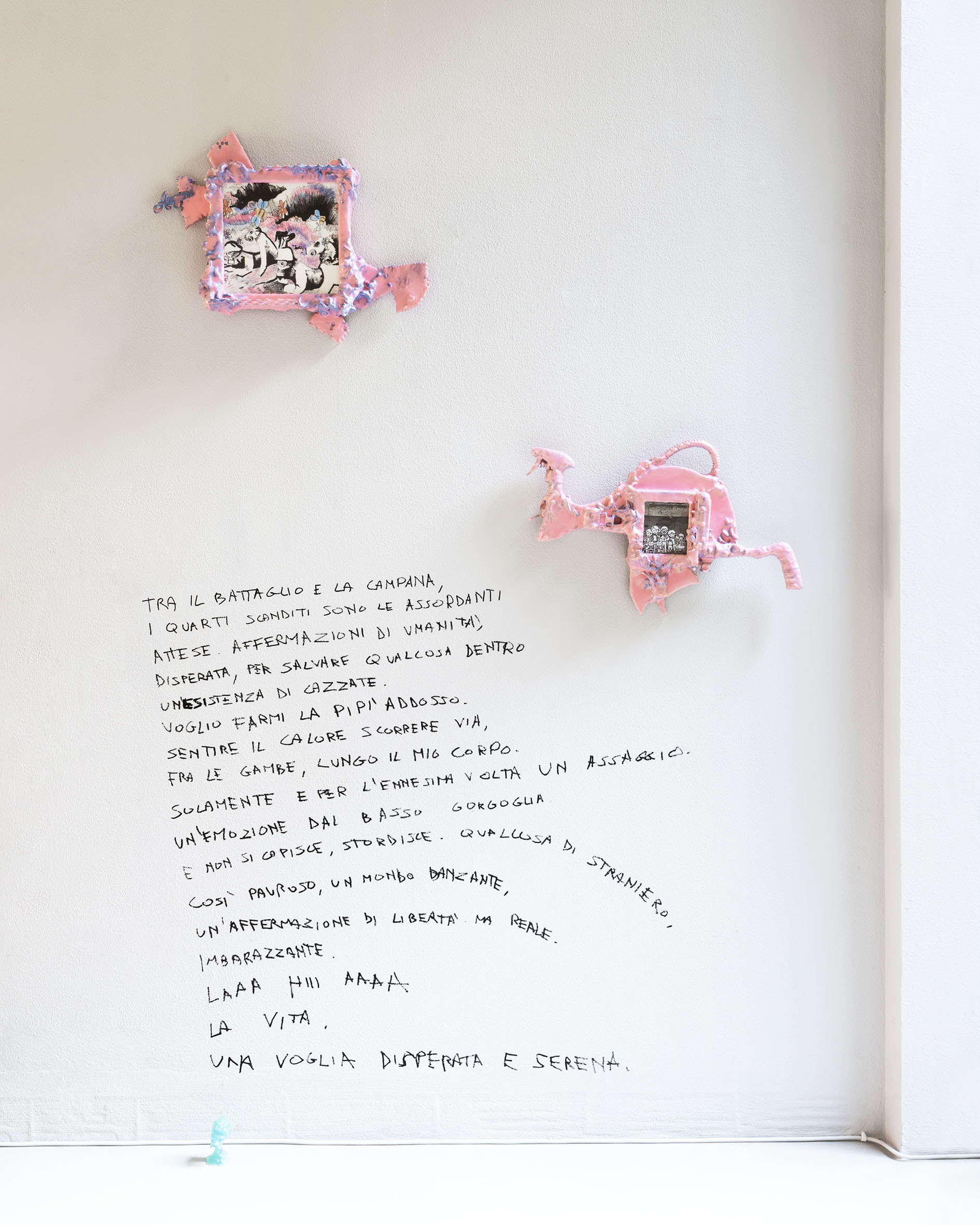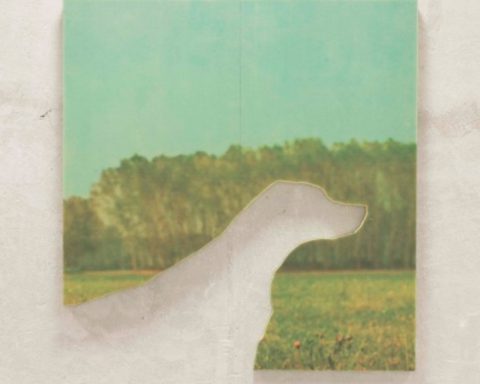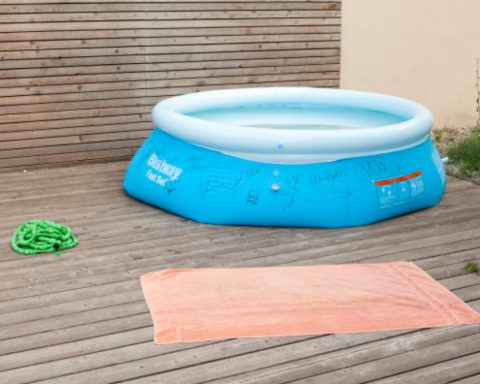Luca Staccioli
Niente può mantenersi sano di mente
in condizioni di assoluta realtàCurated by Dario Moalli
17.09 – 08.10.21
State Of – Milan
“Niente può mantenersi sano in condizioni di assoluta realtà/Nothing can continue to exist sanely under conditions of absolute reality” is the new solo exhibition of Luca Staccioli (1988) hosted by State Of.
The exhibition’s title is freely inspired by a sentence from Shirley Jackson’s book “The Haunting of Hill House”. The writer, active from the post-war period to the sixties, lived her life trapped between her mother’s hatred, a role as wife and mother that she never identified with, and a personal battle she undertook against a patriarchal society which only partly managed to suppress her individuality and creativity.
The title aims at offering a first level of interpretation to the set of artworks conceived by the artist for the exhibition, within which the Real, Reality and Realism play a key role. Here, the words of Mark Fisher come to our aid. In his book “Capitalist Realism” the writer outlines with brutal clarity of mind the condition of contemporary society: “[capitalist realism] is a pervasive atmosphere, conditioning not only the production of culture but also the regulation of work and education, and acting as a kind of invisible barrier constraining thought and action”.
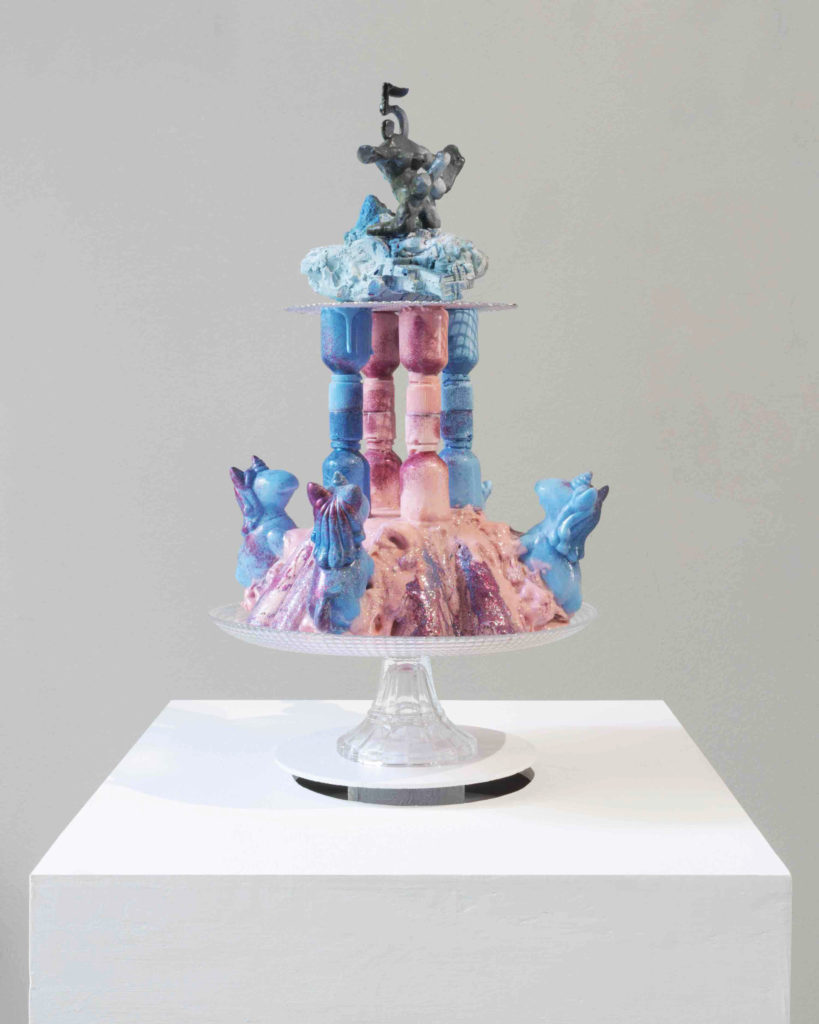
Compleanno 5
Luca Staccioli – Installation view at Aretè Showroom – Niente può mantenersi sano di mente in condizioni di assoluta realtà – Courtesy the artist and State Of – Milano IT – ph Francesco Spallacci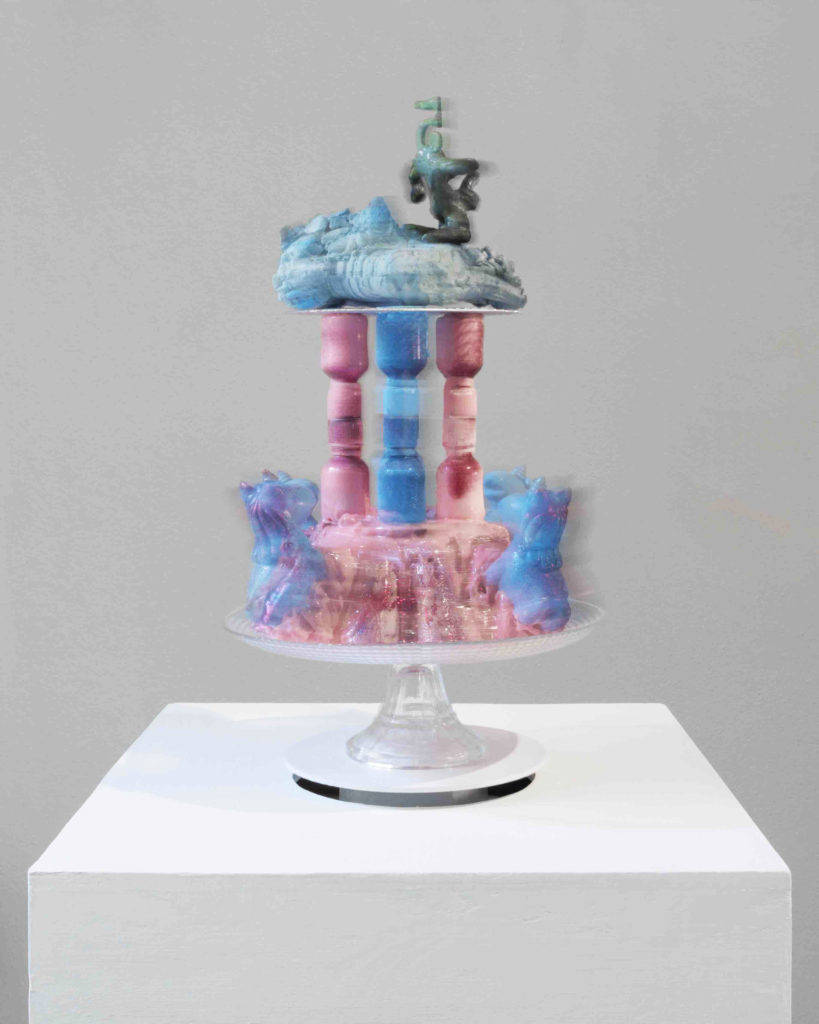
Compleanno 5
Luca Staccioli – Installation view at Aretè Showroom – Niente può mantenersi sano di mente in condizioni di assoluta realtà – Courtesy the artist and State Of – Milano IT – ph Francesco Spallacci
Staccioli’s creative framework comes into play within this mechanism: the exhibition is a projection of a kid’s room just as the artworks are the outcomes of this child-alter ego. The Familiar Pics cycle is an assemblage of heterogeneous materials, made of everyday life scraps and images collected from the internet, TV and historical archives. Through sculpture, drawing, embroidery and collage, this personal collection of iconographic fragments is broken down and reconstructed, as if looked at through the osmotic imagination of a kid, faced with the true essence of Reality, made of violence, anesthetized sensitivity, competitiveness and castration of desire. In the video Please stand behind the yellow line (DHG) everyday gestures are marked by the alarm clock of a mobile phone, signed by yellow rubber gloves that all the people are wearing. The solipsism of a highly regulated reality results in a grotesque and perturbing domestic environment, in which the body disappears. The exhibition is completed with a number of new artworks that will contribute to both nourishing and dismantling the illusionistic system built by neoliberalism.
Through artworks that are elaborate and rich with material, ideological and political layers, Luca Staccioli is able to create a representation of that exact Real which [capitalist] realism tries to suffocate, disguise and conceal. By building on the imaginary world of a child, the exhibition’s narrative framework becomes a creative support to position the viewer in a dimension that cannot be penetrated by the toxic atmosphere of the Real. The child becomes an heroic anti-icon and its unproductivity, emotionality and capacity to feel and desire are the battlefield on which the display unfolds. In this way, the figure of the anti-adult takes shape, a being trapped inside a body and caught in a constant process of negotiation with itself and with a series of imperatives at play to modify its essence. Through these mechanisms, the exhibition aims to deconstruct the neoliberal vision and to suggest an alternative to a way of living inhibited and moulded according to the exigencies of the market and the efficiency of a domesticated emotionality.
Dario Moalli
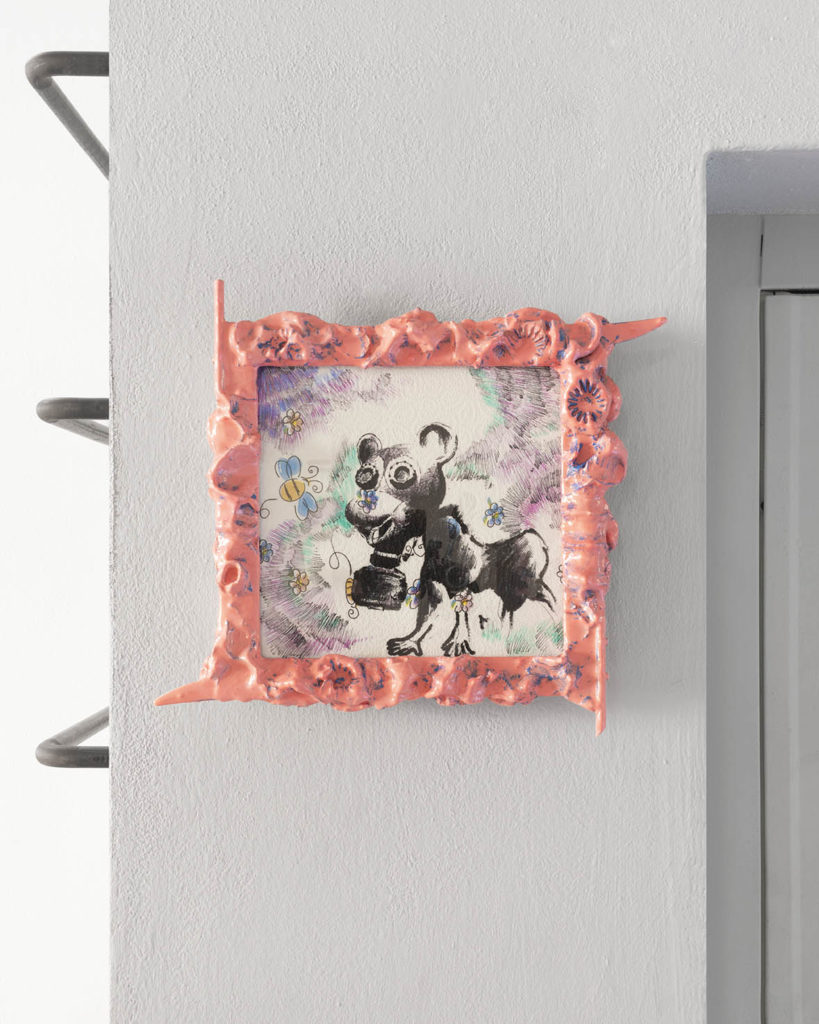
Familiar pics: homy history, puppets therapy
Luca Staccioli – Installation view at Aretè Showroom – Niente può mantenersi sano di mente in condizioni di assoluta realtà – Courtesy the artist and State Of – Milano IT – ph Francesco Spallacci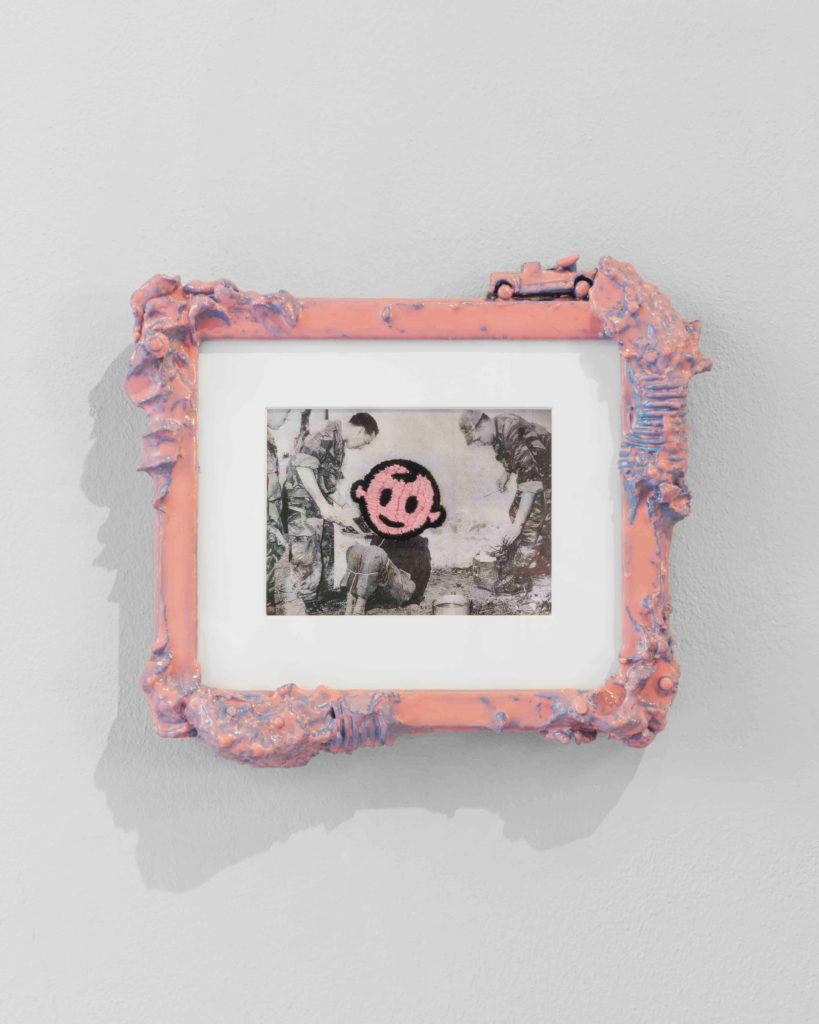
Please stand behind the yellow line (DHG)
Luca Staccioli – Installation view at Aretè Showroom – Niente può mantenersi sano di mente in condizioni di assoluta realtà – Courtesy the artist and State Of – Milano IT – ph Francesco Spallacci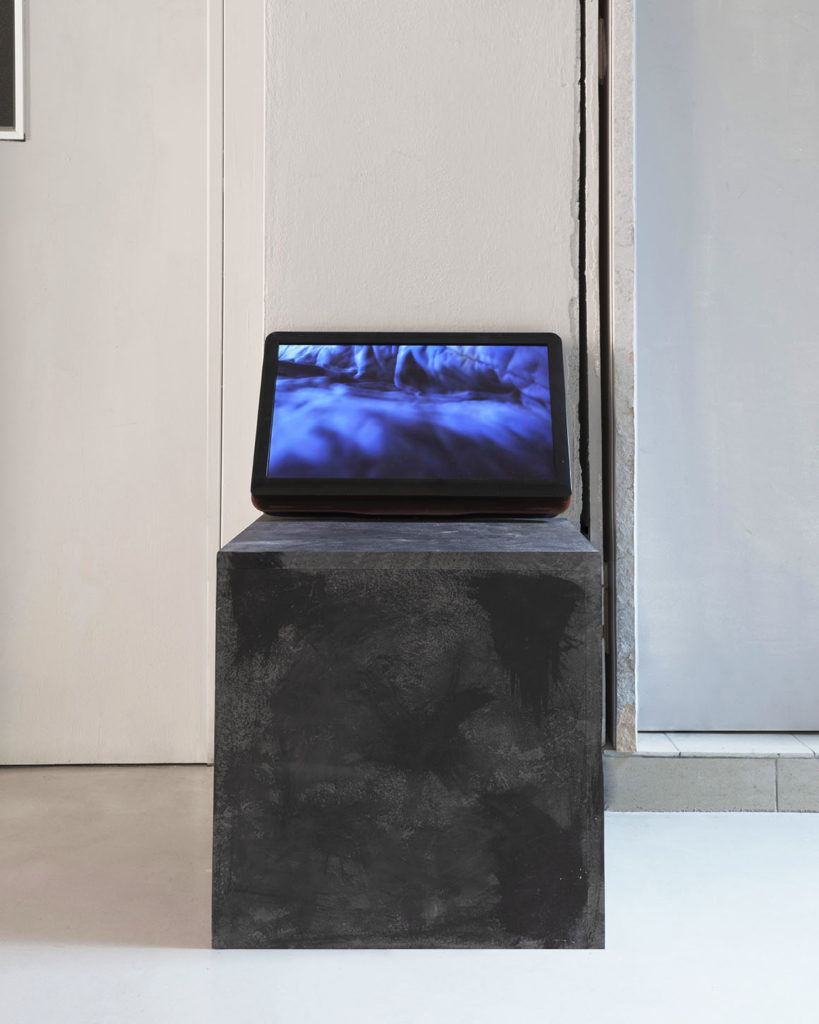
Please stand behind the yellow line (DHG)
Luca Staccioli – Installation view at Aretè Showroom – Niente può mantenersi sano di mente in condizioni di assoluta realtà – Courtesy the artist and State Of – Milano IT – ph Francesco Spallacci


